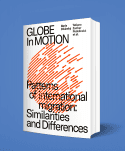Migration has become a more frequent choice for adaptation. People make a personal choice of whether to move or stay. Their decisions profoundly affect the globe. At the macro-level, migration has the power to balance or unbalance the world economy and the labour market. At the mezzo-level, it constitutes networks and institutions with a transnational agenda, crossing the borders of existing nation-states. More importantly, at the micro-level of individuals and groups, it touches very intimate spheres of private lives, changing the patterns of ownership and sharing, family and partnership relations. In conclusion, there is more movement around the globe (flow and circulation of people, goods and information) with less predictable consequences. International migration thus represents one of the most challenging and important issues of the 21st century. Transition towards post-industrial and knowledge-based societies is challenging also for social scientists who face problems not only with a reliable classification of migratory moves, but also with the proliferation of new forms of mobility and migration strategies. As a form of contribution to the ongoing debate between scientists, policymakers, stakeholders and persons from practice, this volume offers contributions from experienced specialists from several countries (from the United Kingdom to Slovakia, from Canada to Slovenia) and various fields of activity.
Globe in Motion. Patterns of international migration: Similarities and Differences

- Boris Divinský - Tatiana Zachar Podolinská et al., Bratislava: Institute of Ethnology and Social Anthropology, SAS, 2018, s. 216, Etnologické štúdie, 34, ISBN: 978-80-970975-7-8
When looking back at history, one may see that the world has never been static; the very opposite is true, it has always been in motion. Human migration has always played a crucial role and was a fundamental spiritus movens that determined the course of many important events. In today’s increasingly interconnected world, international migration has become a reality that affects nearly every corner of the globe.
Keywords:
international migration, patterns of migration, forms of mobility, migration theory